This post may contain affiliate links. Please read my disclosure and privacy policy.
During my first pregnancy, I was required to consume the neon-orange colored glucose drink not once, but twice, to test for gestational diabetes. I failed my first test by a few points, so I had to follow that one up with the 3-hour test, which is even worse!
Luckily, I passed my 3-hour test with flying colors, but I nearly fainted during the process.
During my second pregnancy, I was determined to find a better way. Though I worked with a very traditional doctor for my next pregnancy, she was open-minded to trying an alternative as long as it would be accurate. (See the other alternatives towards the bottom of this post, which my doctor did not consider an accurate measure for gestational diabetes.)
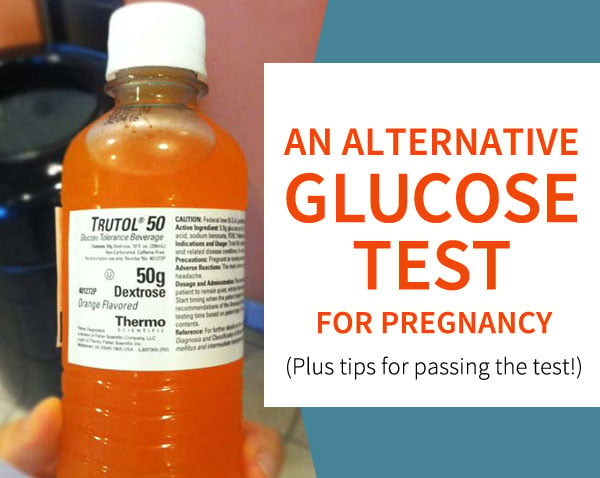
Disclaimer: If you’re seeking an alternative to the traditional Gestational Diabetes Test for pregnancy, I hope that sharing my own experience is helpful, but it’s not intended as medical advice. Please note that I am not a medical professional; therefore, it is essential to consult with your own doctor to develop a personalized plan tailored to your specific needs.
My Alternative Gestational Diabetes Test
Instead of consuming the glucose drink, my doctor recommended that I test my blood sugar four times a day using a glucose monitor.
I did this every day for one week, when I hit the 30-week mark in my pregnancy.
- Pros: What I love about this approach is that I get to see how my body handles the real food I eat on an everyday basis. This seems like it will provide a more accurate result compared to drinking a glucose beverage that I would have never chosen on my own.
- Cons: The only downside is that I hate needles, and poking my finger 4 times a day isn’t fun. But after the first few times, I got the hang of it. This alternative simply involves testing my blood first thing in the morning (to obtain my fasting number) and then testing it again 2 hours after each meal, for a total of four times each day.
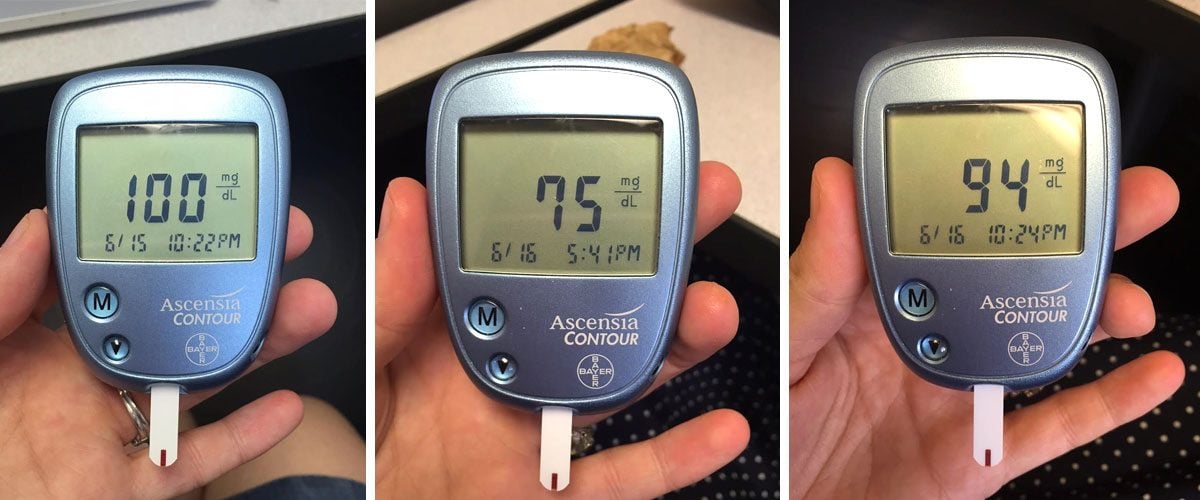
What happens if you decline the Gestational Diabetes Test?
After talking to my doctor, testing my blood sugar like this is what I would have to do if I were to skip the test for gestational diabetes altogether. They would treat me as if I had diabetes to be on the safe side, and I’d have to test my blood sugar 4 times a day until I gave birth.
The only issue I’ve had with this method is that during this pregnancy, I tend to graze all day long. So, I have to consciously NOT eat so that I have 2 hours for my body to process the food I’ve consumed and can get an accurate blood sugar reading.
To accommodate the test, I drank my morning smoothie and ate my mid-morning snack at the same time, so that my body wouldn’t get too hungry while I waited the 2 hours before testing.
How Different Foods Affect My Blood Glucose Levels
As it turns out, my glucose numbers were great, so I started having a little bit of “fun” while I was using the glucose monitor. By fun, I mean I tried out different food combinations to see how they affect my glucose levels.
For example, yesterday I had an all-fruit meal for breakfast to see if it would spike my blood sugar the way everyone always assumes it will, and in contrast, I had a low-carb breakfast another morning to see how my blood sugar responded to that. Below are my results!
All-Fruit Breakfast
Most experts agree that in a healthy person without diabetes, your blood sugar will spike (regardless of what you eat) 45 minutes to an hour after a meal. This is why you test 2 hours after a meal, because your blood sugar should return to normal by then. I’ve always been taught that fruit digests faster than any other food, and according to my glucose numbers, that theory is correct.
My glucose reading after the all-fruit meal, which contained a whopping 92 grams of natural sugar, was by far the lowest glucose number I’ve had all week! I assume that’s because my body was able to process the natural sugar and get it out of my bloodstream as quickly as it had entered.
This number is actually borderline low, and my body was definitely telling me it wanted more food at this point, but I waited the full 2 hours post-meal because I wanted to be as consistent as possible with these readings.
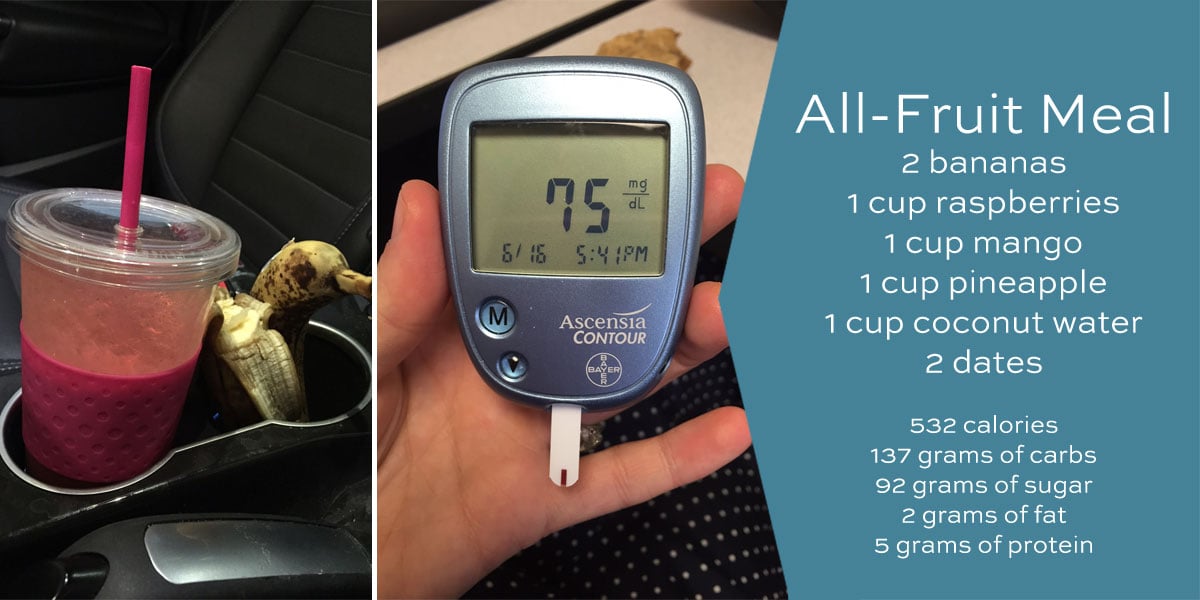
This is why I don’t fear fruit. I am curious to see what would happen to my blood sugar if I ate 92 grams of refined sugar in one sitting, but at the same time, I don’t necessarily want to do that to my body or baby to find out.
Although, on a side note, when I took the 3-hour glucose test during my first pregnancy, my blood sugar wasn’t nearly that low at the 2-hour mark, so my body definitely struggled to get that processed sugar out of my bloodstream when compared to my all-fruit meal above.
Low-Carb Breakfast
To compare and contrast with the all-fruit meal, I had a low-carb breakfast the following morning, which contained only 4 grams of naturally occurring sugar, found in the eggs and cheese. My glucose reading was about average after this meal, not any lower than other normal meals I had eaten this week (94 has been my average post-meal reading).
I found this interesting since the whole meal consisted of only 5 grams of carbohydrates and my other meals are much higher in carbs. I wonder if the higher fat content kept even that small amount of sugar in my bloodstream longer, as I’ve read that fat could be a culprit behind higher blood sugar readings.
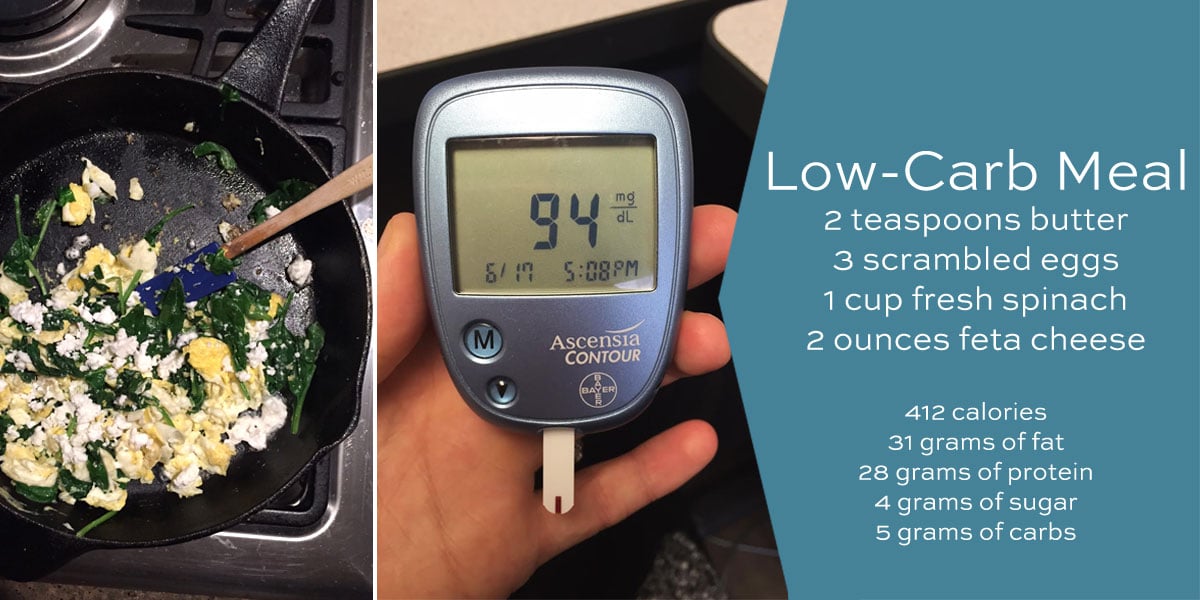
Turkey Wrap Lunch
Out of curiosity, I’ve also tried to eat some typical lunches, like a turkey sandwich wrapped up in a tortilla, which contained a decent amount of carbs, protein, and fat. I’ve had a busy week running errands during my lunch break, so I picked up this wrap at Whole Foods —it’s made to order with warm turkey, field greens, tomato, red pepper, and avocado wrapped in a large spinach tortilla.
Out of all my meals, this one left me with the highest glucose reading I’ve had all week. (Though any reading under 120 is considered perfectly fine as a post-meal glucose reading when testing for gestational diabetes.)

Why It’s Important To Keep Monitoring Blood Sugar
To be on the safe side, my doctor asked me to continue testing my blood sugar every few weeks until the baby was born. I love that this alternative test allowed me to continue monitoring my blood sugar levels throughout the rest of my pregnancy, since gestational diabetes can develop late in the game.
Luckily, that wasn’t the case for me, and I went on to have a healthy childbirth.
Other Glucose Test Alternatives
In case you’re curious, here are some other alternatives to the glucose test that I discussed with my doctor, along with why she doesn’t recommend them:
- A1c Blood Test. This blood test can provide an average of your blood sugar level over the last 3 months or so, which is ideal for testing for diabetes in non-pregnant individuals. The reason why my doctor doesn’t like this test for determining gestational diabetes is that this condition typically won’t show up until much later in pregnancy. In fact, that’s why she didn’t even want me to test my blood sugar until I was 30 weeks along, because gestational diabetes might not make an appearance until the last 8 to 10 weeks of pregnancy. So, it doesn’t really matter what my blood sugar average has been over the last 3 months– I could still develop diabetes, and it could go undiagnosed if we relied on the A1c test.
- Eating an equivalent amount of glucose in food or fresh juice. I’ve heard that some midwives will allow their clients to consume a certain amount of grapes, orange juice, or jelly beans to reach the 50g of glucose found in the standard orange drink. My doctor wasn’t comfortable with that idea because she felt there were too many variables involved. Since food can vary, she was afraid I’d be eating too much or too little sugar and wind up with an inaccurate result– which could potentially lead to undiagnosed diabetes, or falsely diagnosed diabetes, neither of which is ideal. Here’s a research study on jelly beans as an alternative.
Dye-Free Glucose Tolerance Drink
I hope you all find this post useful and that it may help any pregnant women in the future know that there are alternatives to the neon-orange glucose drink, even if you have a very traditional, mainstream doctor.
If nothing else, I learned this time around that they do make a dye-free drink, which would make me feel a little better about drinking it three years ago. Why don’t they make that the standard?
How to Pass the Glucose Tolerance Test for Pregnancy
If you have no choice but to take the glucose test, I’ll pass on this tip that my doctor shared with me: Rather than eating a low-carb meal before you take the test, as so many doctors recommend, she actually recommends eating a low-fat, higher-carb meal because the body seems to respond to the test better that way. (Possibly because the blood clears out simple sugars faster than it does fat, as shown by my numbers above?)
Since false positives are fairly common with the one-hour glucose test, I wonder if this tip might help prevent them. Also, it’s not uncommon for fasting numbers to be higher than post-meal numbers, so if I had to do it again, I would definitely eat something 2 hours before taking the one-hour test. (You must fast for the 3-hour one, so it’s not an option there.) I fasted for my one-hour test the last time, and failed it by one or two measly points, but went on to pass my 3-hour test with flying colors.
Reader Feedback: If you’ve ever been pregnant, did your doctor offer you an alternative to the glucose test? I’d love to hear if there are any other options available!
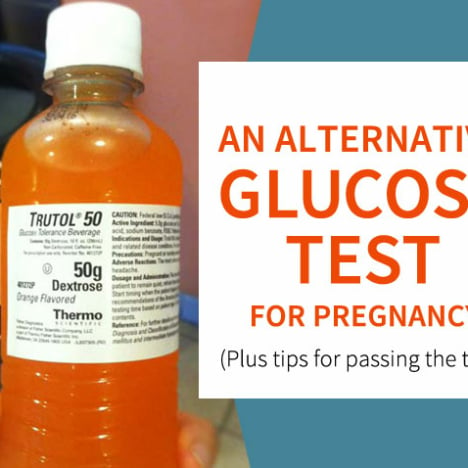
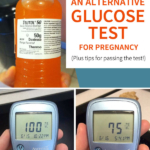

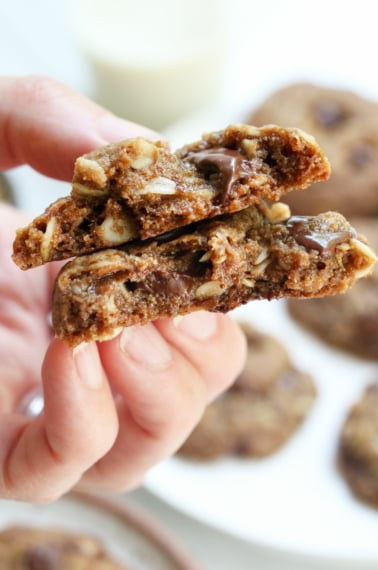
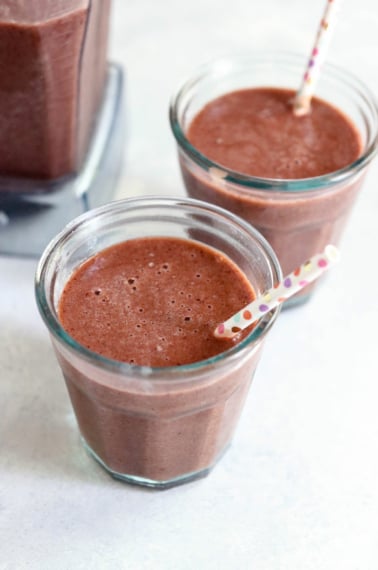
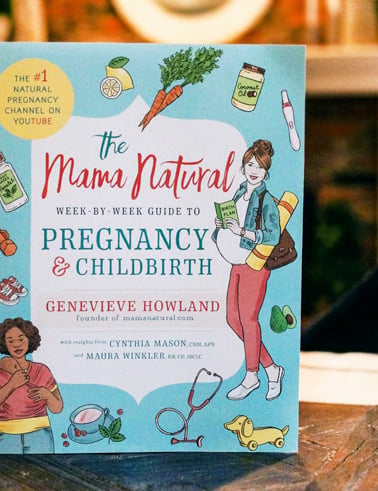







My midwife offered an alternative beverage solution called The Fresh Test (they don’t carry it, but said I can purchase it + bring it for the test appointment. It comes in a powder that had only 3 ingredients… organic, non GMO dextrose, crystallized lemon + peppermint leaf powder. I’m preparing for the 3 hour test + they had me purchase the 75g formula for the test.
I see that you say low fat and high carb to attempt to pass the 1-hr test. What kind of foods do you recommend for that. I tried googling but most things on Google are recommending high fat and low carb. Thank you!
Hemoglobin A1C Testing is a draw that monitors blood sugar levels over a three month period. It has been used as an alternative to the normal Glucose testing and is routinely used for those with Diabetes outside of pregnancy. This was the best option for me and should’t be ignored. Your doctor wasn’t right in the other denials of alternatives but glad you poked your finger enough for one week to find what was best for you.
This was an interesting read! Im 24 weeks pregnant at the moment, and my maternity health care practitioner has not offered my an alternative. I’ve known for years that if I ever get pregnant, the glucose test will be a big problem for me. I Live in Finland, and the standard procedure here is the 3 hour test in the morning after fasting for about 10 hours before.
I’ve previously reacted very badly to sugary drinks on an empty stomach, and in those cases it’s just been a soda after not having eaten for a few hours. This resulted in me being very close to passing out and having to sit with my head between my knees to regain full consciousness. Needless to say, I fear that drinking a large amount of glucose first thing in the morning would actually have me passing out. I’m afraid that either me passing out or just the extremely rapid and dramatic changes to my blood sugar levels would be harmful to either baby, me or both of us. My maternity health care practitioner was not interested in my concerns and said this could not be done in any other way. I was so upset when she told me this I could not really gather myself enough to find the right arguments.
But as I remember that I’ve heard before that there is the alternative of testing your glucose levels at home I’ve decided to pursue this. She still does not like that I refuse to go to the glucose test but on my suggestion she gave me the instructions for blood sugar testing that is given to expectant mothers already diagnosed with gestational diabetes. I’m actually not sure this is the ultimate way to test blood sugars in my situation, but I’ll at least start with them.
I found it interesting to read about your experiments. The low level of blood sugar that you had after an all-fruit meal sounds logical to me. I’m sensitive to low blood sugar and have learned that I always need to include fat in every meal, otherwise I will be hungry again in an hour. My experience is that a high intake of sugars without any proteins or fat will make my blood sugar rise quickly, which sends my insuline rushing to correct it. In my case, my body responds so effectively to a rapid rise in blood sugar that my level of blood sugar will actually drop to a level lower than the starting point – and this is why sugar on an empty stomach makes me dizzy and close to fainting. Naturally I quickly drew my conclusions after the second incident of this, and for years I’ve been very careful not to eat or especially drink sugars on an empty stomach. This keeps my mood and more level and spares me a lot of dizziness and nausea. Going through the glucose test feels very unhealthy for someone who has actively been avoiding these types of situations out of health concerns for years.